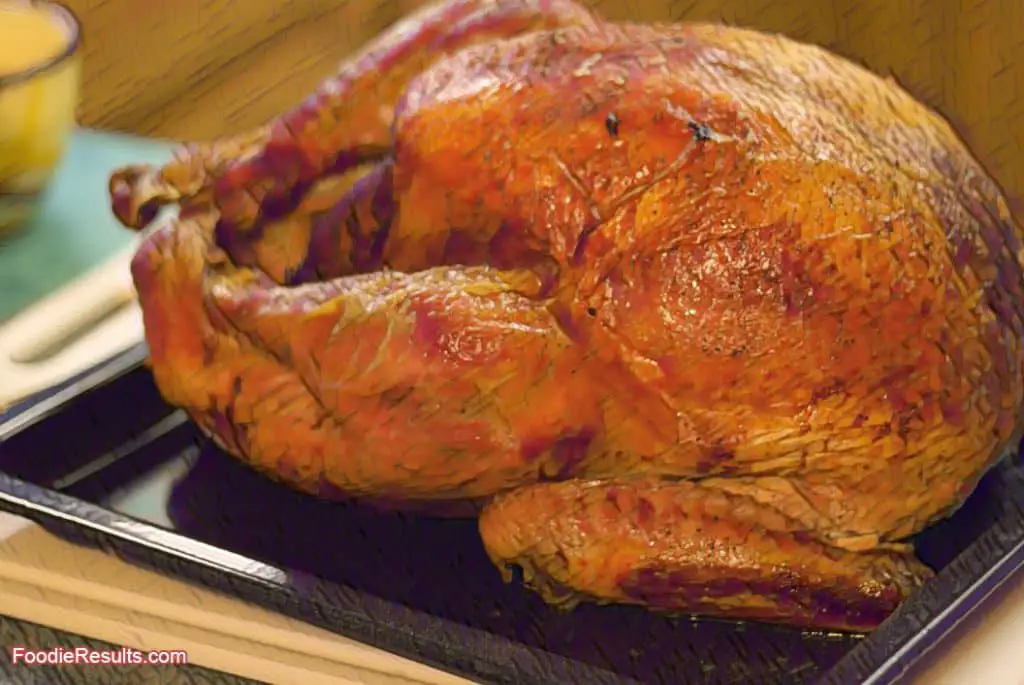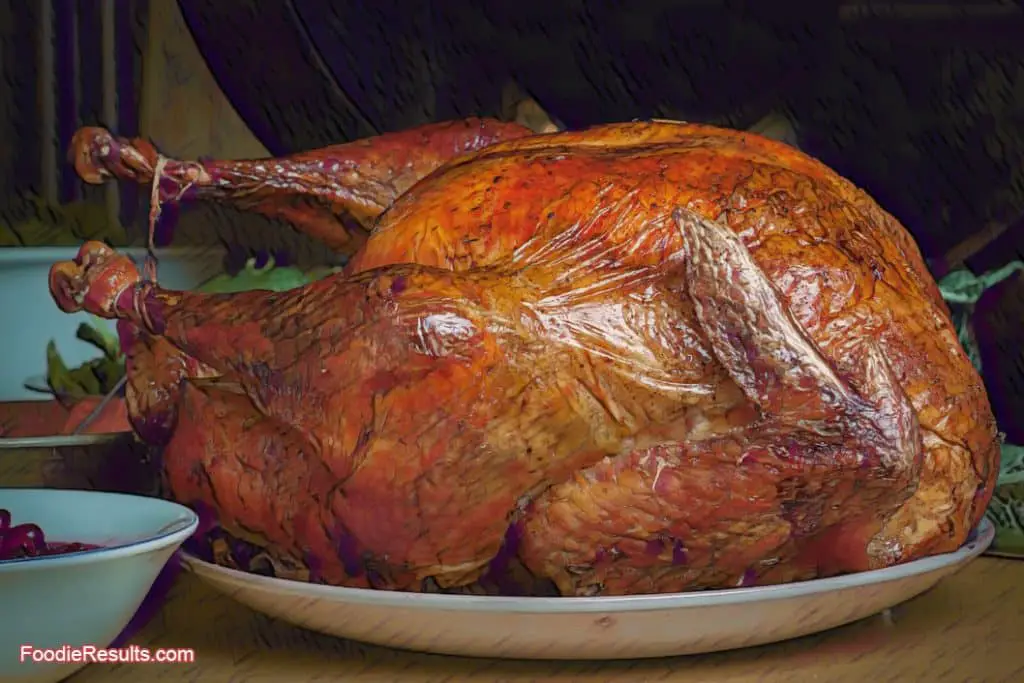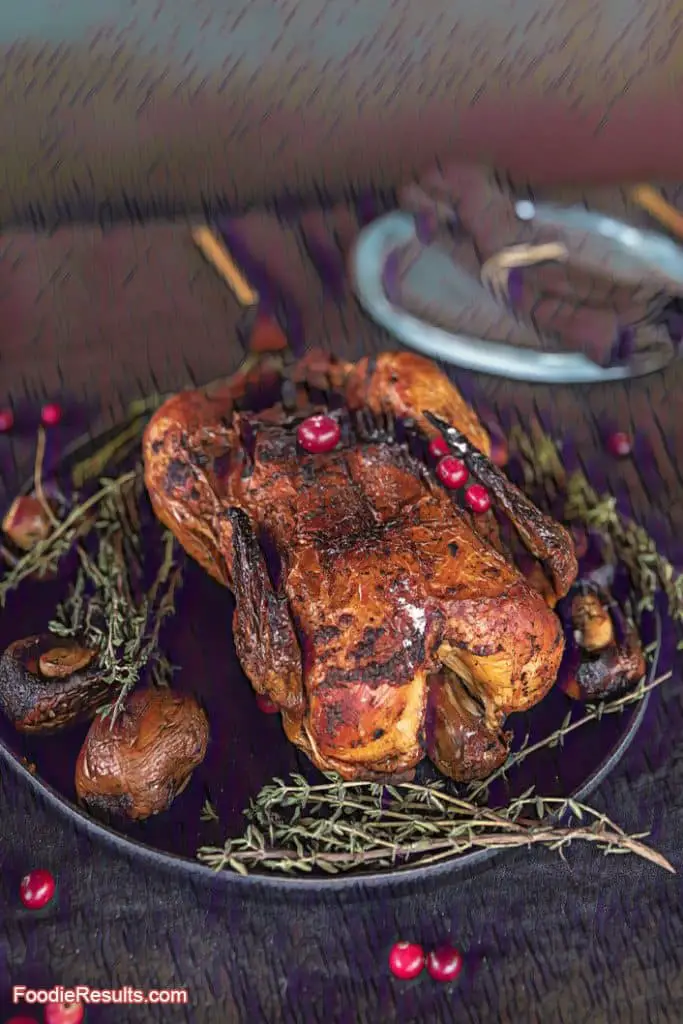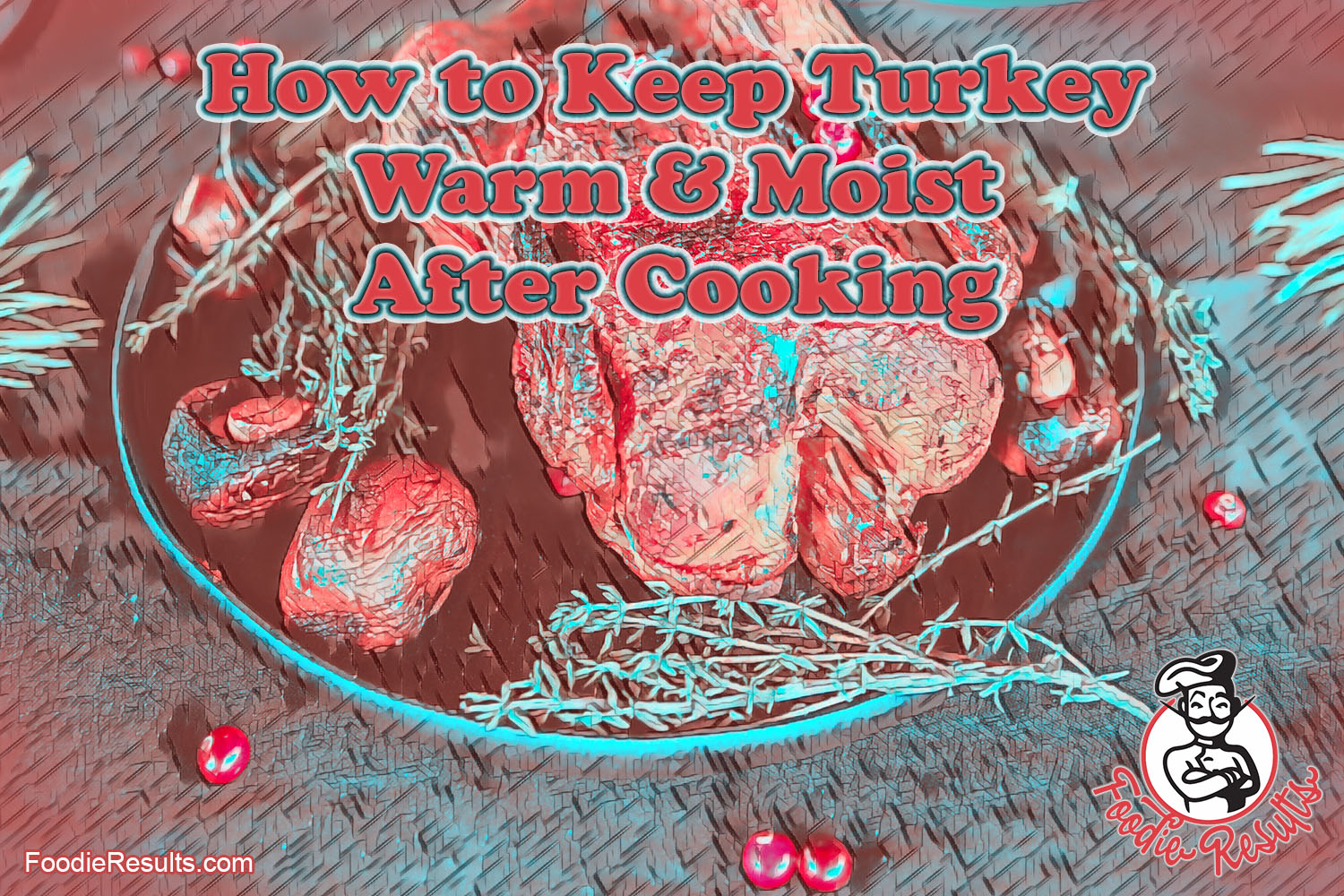“Have you ever wondered how to keep your warm and moist Turkey that way after cooking? Here’s how to do just that!”
Turkey can be one of the most notoriously dry meats out there and can often need a generous dollop of cranberry sauce or gravy to stop it from sticking to the roof of your mouth! But there are ways to cook it at its most tender and moist. I will share with you some methods my family has used over the years to keep their turkeys moist and tender!
Keep in mind this article is focused on keeping the turkey warm and moist after cooking. There are other methods I will discuss in a future article for cooking a moist turkey to start with!
Keeping Cooked Turkey Tasting Great

 by tuchodi
by tuchodi
Gone are the days when we needed to rise at 6 am to get the turkey in the oven to serve at 4 pm for Thanksgiving dinner, only to find the bird is dryer than a bucket of sawdust. Instead, there are certain tricks we can use to ensure that the bird is cooked perfectly and is still just as succulent and delicious if we need to keep it warm and moist for some time after cooking:
One thing to note is that once it starts to cool, it can dry out quickly. To keep it warm and moist after it has been cooked, one of the main tricks is to cover the turkey with tinfoil, put it back in the oven at a low temperature (180-200 degrees Fahrenheit is a good option), and put a pan of water at the bottom of the range. This process will ensure your turkey stays warm and moist if your Thanksgiving dinner needs to be served a little later than planned. Although most years, everyone is standing around the cook saying, “is it ready yet!”
Keep a Meat Thermometer at Hand
A meat thermometer in your kitchen can help cook meats and fish to ensure you don’t undercook or overcook the food. Still, ensuring that a delayed holiday dinner is successful can also be beneficial. Having an instant-read digital thermometer to check the temperature of individual pieces of the meat (as opposed to the entire bird) can be a lifesaver when you’ve already cut the meat to serve but need to pop it back in the oven to keep warm.
Bringing me to my second trick, don’t cut the turkey until you are ready to serve! Once cut, the meat will start to dry out quickly as you have increased the surface area for the moisture to escape.
Be Mindful of Cooking Times
There is no ‘one-time-suits-all’ when cooking any meat, particularly white meats (like turkey), which are prone to going very dry if too much heat or too much time in heat is applied. It all comes down to basic mathematics. The bird’s weight measures the length of the cooking time, and the rule here is (with an unstuffed turkey) you roast it for fifteen to twenty minutes per pound (15-20 minutes per lb).
If you like to stuff your turkey before cooking, use the stuffing as your point of heat reference; roast the bird until the stuffing hits 165 degrees Fahrenheit and you’re good to go.
Never guestimate! These little tricks (plus your trusty thermometer) will guarantee a perfectly-cooked turkey!
Let Your Bird Rest
Once your turkey is perfectly cooked, using the above advice for reference, it’s time to let that bird rest for fifteen to thirty minutes before serving. You are now in the stage where you’ll need to keep the meat warm and moist during that period before serving.
Keeping Your Turkey Warm & Moist
Now is not the time to go off and enjoy a glass of wine and an episode of your favorite show! Time is of the essence here. Let your bird cool for ten minutes – do not cover it with anything – like foil – as this may cause it to continue cooking. After the cool-down, you can protect your turkey with foil ensuring you have moved it away from heat sources.
For instance, if you have an oven range combo, your oven will still be putting off a lot of heat and might continue cooking the bird if you set it on top of the range. My grandmother always moved her turkey to the other side of the kitchen during this cooking phase.
Then you can cover the bird to keep heat and moisture in without overcooking and drying the meat. If your kitchen isn’t the warmest environment, you can place a dish towel over the foil for added insulation, but I recommend skipping this step for most people.

 by Tim Sackton
by Tim Sackton
If your guests are running late, this is where the pan-in-the-oven trick comes in handy. Try and get a good gauge on how late they’re going to be, and then pop your turkey back in the oven on low heat (still in the foil – but minus the towel, of course!) with a pan of water placed at the bottom compartment of the oven. This process will act as a steamer, which will help keep the meat moist and delicious when those tardy guests finally arrive!
Personally, I’ve never had to test this tip because, as I stated above, the guests are always impatiently waiting on the cook at my family get-togethers.
Cooking Turkey: Extra Top Tips
Spatchcock the Bird
If you’re unfamiliar with this interesting word, it means to remove the animal’s backbone and lay the bird flat on the baking tray before cooking. This will help with more consistent cooking in the hard-to-reach areas, such as the thighs, and prevent other areas (like the breasts) from becoming overcooked – which is why turkey breasts are notoriously dry! It will also mean all the bird’s skin will become deliciously brown and crispy.
I hope to try this method and record a video for our YouTube channel.
Cook Your Turkey the Day Before (Optional)
Roasting your turkey the day before serving it can make life easier. You can cut it into serving portions and save yourself some time. Keep the pieces together to preserve moistness. Once completely cool, cover your turkey portions with cling film and put them in the fridge.

 by Dru Bloomfield
by Dru Bloomfield
The following day, you can separate your portions on a baking tray, cover the turkey in chicken stock and reheat it in the oven at high heat (450 degrees Fahrenheit is a suitable temperature) for circa twenty to thirty minutes (don’t forget about your thermometer!) and serve.
Safety First
When cooking meat – mainly white meat – it is essential to ensure all safety precautions are adhered to, as viruses, such as Salmonella, are particularly rife with these types of meats. So, unless you want to spend the holiday season fighting with your family over toilet access, pay heed to the following:
- Always defrost your turkey in the fridge. Never leave it on the side of the sink or out in the open. Uneven defrosting is where many people run into issues with bacteria – and never defrost it in the oven!
- Avoid cross-contaminating boards, knives, etc., with other foods when handling or preparing a raw turkey. And wash your hands after handling.
- Always temperature-probe the stuffing if cooked inside the bird. Never assume that the turkey is to-temperature, and remember the little thing that pops out that turkey makers stick in the birds is not always accurate.
How to Keep Turkey Warm & Moist After Cooking: FAQs
Should I cover the turkey with foil when cooking?
When cooking turkey, your best bet is to go for both options: covered and uncovered. Covering the bird with foil for most of the cooking time will help maintain moisture, but removing it around half an hour before cooking time will help achieve that delicious golden crunch on the skin. There is more to add to this, so make sure you look for my next article on turkeys.
Should I put butter on my turkey before cooking it?
You can, but it may not help with the moistness situation, and real butter is getting very expensive, so rubbing the bird could be a waste of money. However, I have a particular affinity for butter with my chicken, making me question the idea that I should not use butter on my turkey. I will report more on this after the holidays because I’m hoping turkey goes on sale.
What should you put in the turkey for flavor?
Many people choose to stuff the turkey with stuffing (hence the name), but if you’re not keen on this, you can create a herb bundle (such as sage, rosemary, and thyme) and throw in a few cloves of garlic to add some flavor to the bird.
You can be as creative as you like here and add onions, apples, and even citrus.
If you are not sure what stuffing is, don’t worry. I will post recipes soon, but an easy favorite is corn meal, onions, carrots, chicken (or turkey) stock, and the turkey’s innards if you are keen on eating those. Mix it and push it inside the turkey to cook while the bird is cooking.
Final Thoughts
If you choose to take only one thing from this article, it is to invest in a good thermometer. This will prevent you from either under or overcooking your bird. And it can help keep your bird warm if your guests are running late. But overall, remember using foil and extra stock can be helpful. You may also see a lot of sauce at the bottom of the pan after you cook your turkey, don’t be afraid to scoop that up and drizzle it over your turkey.
Feature Image


